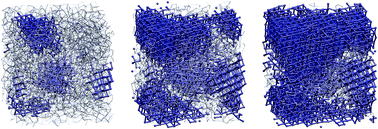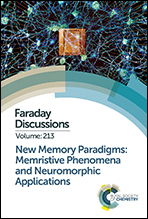Priming effects in the crystallization of the phase change compound GeTe from atomistic simulations
Abstract
Strategies to reduce the incubation time for crystal nucleation and thus the stochasticity of the set process are of relevance for the operation of phase change memories in ultra-scaled geometries. With these premises, in this work we investigate the crystallization kinetics of the phase change compound GeTe. We have performed large scale molecular dynamics simulations using an interatomic potential, generated previously from a neural network fitting of a database of ab initio energies. We have addressed the crystallization of models of amorphous GeTe annealed at different temperatures above the glass transition. The results on the distribution of subcritical nuclei and on the crystal growth velocity of postcritical ones are compared with our previous simulations of the supercooled liquid quenched from the melt. We find that a large population of subcritical nuclei can form at the lower temperatures where the nucleation rate is large. This population partially survives upon fast annealing, which leads to a dramatic reduction of the incubation time at high temperatures where the crystal growth velocity is maximal. This priming effect could be exploited to enhance the speed of the set process in phase change memories.

- This article is part of the themed collection: New memory paradigms: memristive phenomena and neuromorphic applications


 Please wait while we load your content...
Please wait while we load your content...